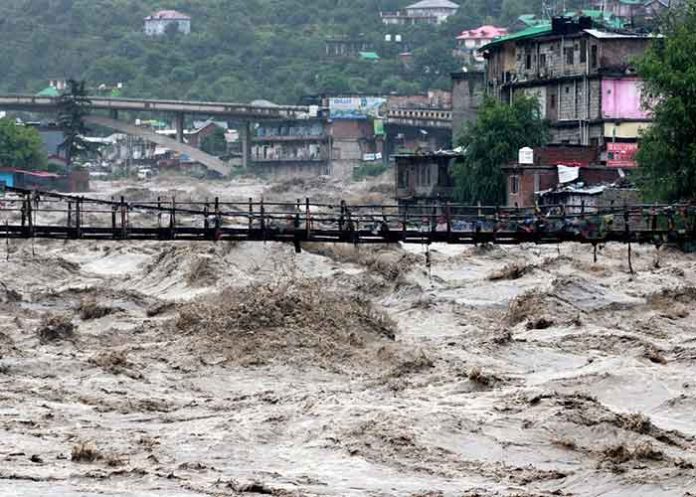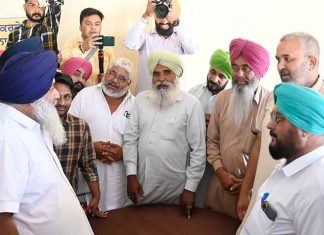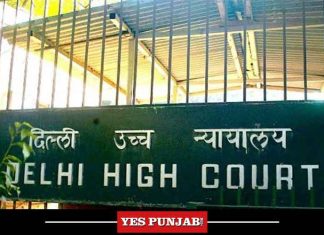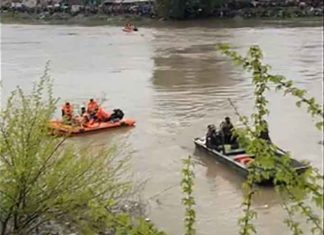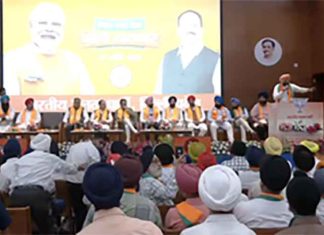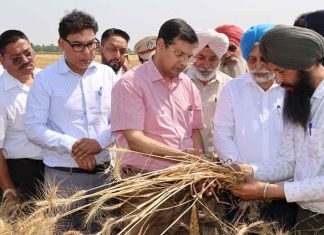Shimla, Aug 27, 2023- Horrifying visuals showing buildings and bridges collapsing like pack of cards in the blink of an eye in Himachal Pradesh with torrential rains have battered the hilly state, causing 376 deaths since the onset of the monsoons, locals believe — nature doesn’t kill, human-induced activities do.
The appearance of cracks on roads and houses across the state, notable in Mandi, Kullu, Shimla, Kangra and Kinnaur districts, is mainly due to the rampant infrastructure development that is happening in a very fragile ecosystem like Himalayas, say experts, adding climate change acts as a force multiplier.
However, local environmental activists largely blamed the irreparable damage to several tunnels and hydropower projects. They say their voices are often blatantly ignored by authorities.
Several experts have cited that traditional housing construction technologies are able to withstand earthquakes and landslides much more strongly than the newly constructed infrastructures.
They say the ongoing nature’s fury is primarily because of anthropogenic activities — unplanned land use, cultivation on steep slopes, overgrazing, major engineering activities and over-exploitation of village or community forests.
The population has increased manifold and so has the tourist landfall.
Infrastructure has also amplified and has been unchecked. However, most of the tourist destinations do not have a proper drainage system.
Besides gradual weathering of fine material between the rocks of debris, water percolation has decreased the cohesive strength of the rocks over the time. This has resulted in landslides, triggering cracks in the houses.
Also, the construction of the tunnels for hydropower projects is being done through blasting, creating local earthquake tremors, shaking debris above the rocks, again leading to the cracks.
The Himalayas is a very fragile ecosystem. Most parts of Himachal Pradesh are either located in seismic zone V or IV which are prone to earthquakes.
The Supreme Court, while hearing a public interest litigation last week, observed the problem of haphazard construction, increased vehicular and tourist load, and the lack of planned development is an important issue, suggesting that it could constitute a panel next week to study the carrying capacity of mountainous areas.
The petition called for determining carrying capacity for a realistic assessment of the availability of basic amenities that could help fix a cap on the inflow of tourists and vehicles and take corrective measures to preserve the ecological balance around tourist places in the Himalayan states.
A perusal by IANS of a 2017 report by a National Green Tribunal (NGT) pointed committee, which made an in-depth analysis of the carrying capacity of Shimla city and Shimla Planning Area vis-a-vis the trend of growth of population, construction, vehicular population and ecological impacts pointed out that Shimla can be affected by not only earthquakes occurring in its vicinity, but also the ones that take place in other parts of the state.
Earthquake of high magnitude of over six on the Richter scale is entirely possible in this region, warns the report.
It can cause severe ground shaking with peak ground acceleration up to 4 m/s in and around the state capital.
Given the volume and quality of the current building stock, this will have huge destructive potential.
Revealing the ground reality, it says given the poor quality of constructions ignoring the underlying geological settings, proneness to earthquake and landslide, most of the buildings will collapse in an earthquake causing peak ground acceleration of 4.0 m/s and above.
The situation will get compounded on account of pounding and cascading effect, which may significantly increase loss of lives, which would be difficult to estimate. The hazard risk gets further aggravated considering most of Shimla and Shimla Planning Area are prone to landslides, which it is observed in the recent past, get accentuated due to climate change induced intense rainfall and unscientific cuttings of slopes for construction purpose.
The committee found that most of the buildings are constructed over land with slopes exceeding 45 degrees, and in certain cases the buildings are constructed on the slopes exceeding 70 degrees.
Such constructions require huge cutting of the contour that makes the land susceptible to landslides, says the report. Subsidence of land in a number of areas and landslides are becoming frequent.
The report calls for an urgent need to decongest and depopulate Shimla and Shimla Planning Area, particularly areas like Sanjauli, Dhali, Tutu and Lower Lakkar Bazar.
All institutions, including the defense establishments, which are not required to operate from Shimla, must be relocated to the plains or other areas.
Secondly, says the report, all buildings, which have been constructed ignoring the seismic sensitivity and load-bearing capacity and those which are constructed very close, must be identified by a group of experts and the government through the process of incentives and disincentives within a timeframe, say 5-10 years, and if required through law, ensure demolition, relocation and reconstruction.
For this purpose, detailed new construction guidelines, suitable for the hill environment of Shimla, should be developed and these guidelines should take into account the earthquake and landslide risk, load-bearing capacity of different localities, slope angle, structural design of the buildings and the quality of construction, including their foundations that can withstand a probable earthquake.
The committee has deliberately decided not to make any recommendation for the construction in the 17 Green Belts notified by the state government in December 2000.
Responding to a horrifying incident of buildings collapsing due to a rain-triggered landslide in Anni town of Kullu district on August 24, Parveen Kaswan, an Indian Forest Service officer, said, “What a tragedy. There is a saying in disaster management — nature doesn’t kill, human structures do!”
Well, reality suggests that most of the rampant construction with amendments to land laws by the successive BJP and Congress governments to attract non-residents have created a concrete jungle across Himachal Pradesh’s once scenic towns, starting with its capital Shimla, the erstwhile summer capital of British India.
In the run-up to the Assembly elections last year, then Cabinet, led by Chief Minister Jai Ram Thakur, gave its nod to the Shimla Development Plan, a first in over four decades, to allow need-based construction even in the core, congested and sinking zones.
When the current Congress government came at the helm, it notified the Shimla Development Plan that proposed to throw open 17 no-construction green belts.
However, the apex court has put on hold the Shimla Development Plan till all objections are addressed. The plan allows new constructions in the congested and thickly-populated core areas, which the NGT had already prohibited.
Geologists warn that massive infrastructures can’t be good for the mountains and may amplify ecological risk. (Agency)
CLICK HERE to Subscribe to YesPunjab Telegram Channel & receive Important News Updates



